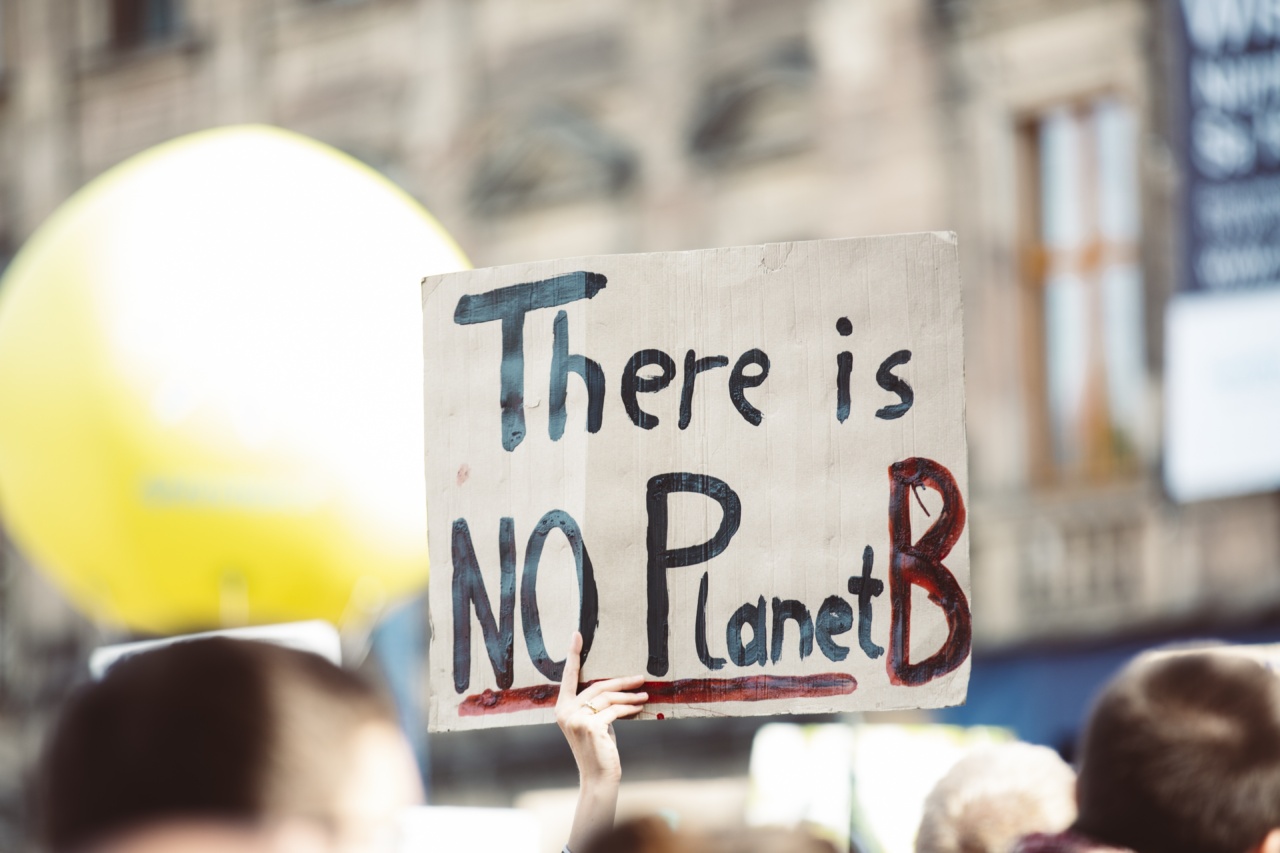Pandemics, like the recent COVID-19 outbreak, have become a devastating reality for our world.
The consequences of such health crises are not limited to the loss of human lives but also include economic instability, political unrest, and a strained healthcare system. While the emergence of pandemics has been primarily associated with viral evolution and human behavior, the impact of climate change cannot be overlooked.
The Link between Climate Change and Pandemics
Climate change, caused by human activities such as deforestation, industrialization, and the burning of fossil fuels, is dramatically altering our planet’s ecosystems.
This alteration affects the distribution and behavior of various species, including pathogens and their vectors. As a result of these changes, the risk of pathogens spilling over from animals to humans is increasing.
1. Changing Habitat Distribution
One of the primary ways climate change facilitates the spread of pandemics is by altering the distribution of habitats for various species.
As temperatures rise and rainfall patterns shift, the geographic ranges of many plants, animals, and insects change. These shifts can bring together species that haven’t interacted before, potentially leading to the transmission of new and dangerous pathogens.
2. Changing Migration Patterns
Climate change also impacts the migratory patterns of animals and birds.
Some species may be forced to alter their traditional migratory routes or stay in one location for longer periods, causing overcrowding and increased chances of disease transmission. For example, the spread of avian influenza, or bird flu, is exacerbated by migratory birds carrying the virus to new areas as they adapt to changes in climate and habitat.
3. Impact on Vectors
Vectors, such as mosquitoes and ticks, play a crucial role in transmitting various deadly diseases, including malaria, dengue fever, Lyme disease, and Zika virus.
Climate change influences vector behavior, abundance, and distribution, leading to a higher risk of disease transmission. Rising temperatures and altered rainfall patterns can create favorable breeding conditions for mosquitoes, for instance, while also expanding their geographical range into previously unaffected regions.
4. Habitat Loss and Fragmentation
Climate change-induced habitat loss and fragmentation make it easier for zoonotic diseases to spill over into human populations. As deforestation and urbanization continue at an alarming rate, humans come into closer contact with wildlife habitats.
This interaction increases the likelihood of coming into contact with new pathogens, leading to potential outbreaks. For example, the destruction of the Amazon rainforest has led to increased contact between humans and various zoonotic diseases.
5. Weakening of the Immune System
Climate change can indirectly contribute to the spread of pandemics by weakening the immune systems of both humans and wildlife.
Extreme weather events, such as heatwaves and floods, result in the displacement of populations and the breakdown of healthcare systems. These disruptions leave people more vulnerable to infectious diseases and hinder their ability to access healthcare services effectively.
Similarly, wildlife populations experiencing stress due to climate change become more susceptible to infections, making them potential reservoirs for future pandemics.
6. Changes in Water and Food Security
The effects of climate change on water and food security are far-reaching and consequential. Changing rainfall patterns and more frequent droughts disrupt agricultural productivity, leading to food shortages and malnutrition.
Inadequate nutrition compromises immune systems, making people more susceptible to diseases. Additionally, reduced access to clean water can facilitate the transmission of waterborne diseases. For example, periods of drought may force people to consume contaminated water sources, increasing the spread of diseases such as cholera.
7. Impact on Migration and Human Settlements
Climate change is expected to increase human migration as people are forced to leave their homes due to rising sea levels, extreme weather events, and ecological degradation.
This mass movement of people can lead to overcrowding in refugee camps and informal settlements, which often have inadequate sanitary conditions. These conditions provide a breeding ground for communicable diseases to flourish, potentially triggering widespread outbreaks.
8. Conflict and Pandemics
Climate change exacerbates existing political and social tensions, increasing the likelihood of conflicts and wars.
Both internal displacements and cross-border migration resulting from climate-related factors can strain the resources and infrastructure of host countries. Limited resources and instability contribute to the breakdown of healthcare systems and the spread of diseases, as we witnessed during the refugee crisis in various parts of the world.
It is crucial to recognize and address these connections to mitigate the risk of future pandemics.
9. The Role of Environmental Policies
To combat the increasing risk of pandemics due to climate change, robust environmental policies and international cooperation are needed.
Governments must prioritize the reduction of greenhouse gas emissions and promote sustainable practices to lessen the adverse effects of climate change on ecosystems. Protecting and restoring natural habitats, along with developing strategies to minimize human-wildlife interactions, are essential steps to mitigate the risks of future pandemics.
10. Building Resilience and Preparedness
Developing resilience and preparedness at both individual and societal levels is crucial to effectively respond to pandemics.
Strengthening healthcare systems, improving disease surveillance, investing in research and development, and raising awareness about the connections between climate change and pandemics are key measures. Multidisciplinary collaboration across the fields of public health, ecology, climate science, and policy-making is essential to build a resilient global community.
Conclusion
It is evident that climate change is intertwined with the increasing occurrence of pandemics. By understanding the intricate connections between climate change, ecosystems, and human health, we can take proactive steps to minimize the risks.
Effective policies and international cooperation, coupled with sustainable practices and investments in healthcare and research, can help mitigate the impact of climate change on pandemics. It is crucial that we act now to secure a healthier and more resilient future for ourselves and generations to come.































